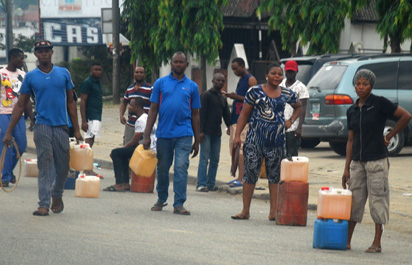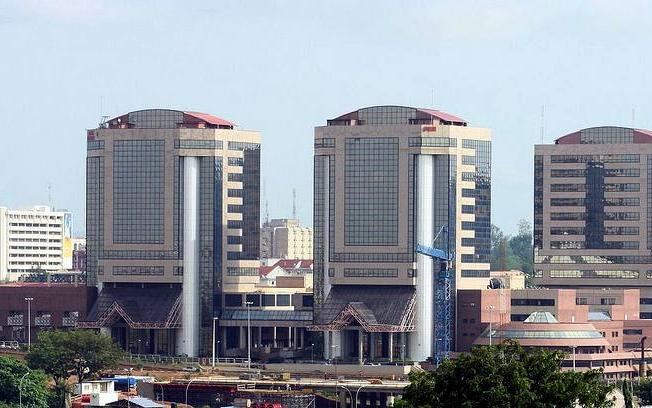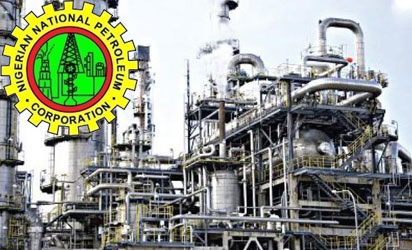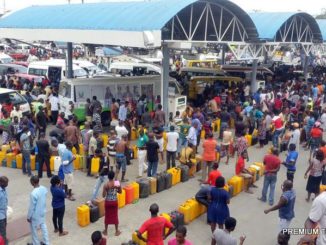
PETROLEUM marketers threatened, in their communiqué of 29th August, 2017, to commence mass retrenchment, unless government settles over $2bn outstanding invoices, and also settles interest charges, on their delayed payments and the related exchange rate differentials, notwithstanding that the 2017 N7.4tn budget, already contains a crippling N2.32tn or 30% deficit.
Evidently, confusion trails the flip-flops in government’s failed attempts to remove subsidy and deregulate petrol pricing. However, the $2bn outstanding debt, may technically, alarmingly, rise beyond $4bn (N1.4tn) before year end, if petrol price remains at N145/litre, for fuel subsidy to ultimately, voraciously consume about 20% of 2017 budget! Furthermore, in a report in Punch edition of 24/8/17, the Fiscal Responsibility Commission (FRC) also confirmed that Government illegally withdrew over N359bn from the Excess Crude Account to fund subsidy in 2015. Nonetheless, the FRC is yet to report how much subsidy NNPC has funded between 2016-17, without Legislative approval.
Furthermore, the present fortuitous rise in crude oil price well beyond $40/barrel, should normally be a welcome development for enriching CBN’s depleting dollar reserves; conversely however, if crude price climbs once again and if Naira exchange rate stagnates, the retention of N145/litre petrol price will invariably oppressively escalate the burden of subsidy.
The above title ‘Is Petrol Still Subsidized’ was first published on 31st October 2016; a summary follows hereafter; sadly, the question posed still remains officially unanswered: please read on:
“Petroleum Minister, Dr. Ibe Kachikwu, informed newsmen in Abuja, on 17 December, 2015, that Government would focus on price modulation to ensure efficiency and regular supply of petroleum products; price modulation, according to Kachikwu, “has nothing to do with the removal or existence of subsidy.”
The Minister also explained that petrol price would no longer be fixed, as crude price would continue to determine petrol price. Kaichukwu, however, dismissed speculations that pump price would return to N97/litre in 2016, but, added however, that a band between the earlier discounted price of N87 and the current N97/litre might be adopted. Evidently, quite surprisingly, the Minister at this stage, probably did not fully recognize Naira exchange rate as the critical determinant of domestic petrol price.
However, on 11th May 2016, after 5 months of social anguish induced by acute fuel shortage, Vice President, Yemi Osibanjo, set a new pump price of N145/litre. Government expressed optimism that the new price would improve supply, and stimulate competition and eventually drive down pump price. The new price, according to Kachikwu, was predicated on a projected exchange rate of about N280=$1; however, barely 2weeks after CBN announced its flexible exchange rate regime, the Naira/Dollar rate rose above N300/$, while crude oil price also climbed and stabilized around $40/barrel; consequently, profit margins were eroded, and the new price became unprofitable for third party importers. Invariably, the over N150/$ present gap between official and parallel exchange rates, will ultimately spike the official Naira exchange rate well beyond N300=$1 to make the current petrol price of N145/litre unworkable.
Curiously, in a seemingly unsolicited intervention, nine former NNPC GMDs, expressed their fears, in an NNPC press release on 4th September 2016, after a meeting with the Petroleum Minister that the subsisting N145/litre was “not congruent with the downstream liberalization policy, especially when foreign exchange and other price determining components, such as crude oil cost and NPA charges remain uncapped”. Indeed, prior to the Ex-GMDs’ reaction, oil marketers had similarly suggested, according to a Punch Newspaper report of 07/08/2016, that “if all pricing components are adequately captured, the actual or real cost of petrol was N151.87”.
In consonance with this observation, Mr. Mele Kyari, the NNPC GMD, Crude Oil marketing, also stated on 24th October 2016, at an oil Expo in Lagos, that “it is impossible today to import and sell the product at the current fixed exchange rate”. Consequently, Kyari warned that “the burden would become too heavy if NNPC remains the sole importer of petrol”.
However, in order to douse any public anxiety on supply, NNPC’s Director, Public Affairs, Garba Deen Muhammed, quickly, assured Nigerians, at another press briefing, two days later, that the petrol pump price of N145/litre has not been increased. Muhammed confidently asserted that there couldn’t be petrol shortages with the subsisting, apparent supply glut and very robust stock and long term procurement contract that NNPC has established with suppliers. When asked if NNPC was still subsidizing fuel, the GMD emphatically countered, “No, there is no subsidy”, but boasted however, that “the current availability of PMS was a result of the “diligent application of commonsense with price modulation,” and therefore further assured, that “petrol prices were now being determined by market forces.”
So, the dilemma is that, with the conflicting reports from the NNPC ‘family’ who then, do we believe on the issue of sustainable petrol price, supply and subsidy?
Nevertheless, if NNPC remains sole importer, as suggested by Kyari, and petrol sells below its cost price, then of course, it is inevitable that the corporation’s financial accounts will ultimately look very tattered and ugly. Incidentally, Newspaper publications on forex usage have never thrown up NNPC as purchasing forex from commercial banks for petrol imports. The critical question therefore is, with the adoption of the Single Treasury Account for all government revenue, how does NNPC source forex and what Naira exchange rate, applies when NNPC adopts to in-house dollar supply to pay for its substantial petrol imports?
Furthermore, how much subsidy is NNPC presently giving away on each dollar allocated for its petrol imports to ‘artificially’ sustain the present N145/litre price; indeed, how much of this subsidy is reflected as unbudgeted, public expenditure, without the required legislative approval, since provision for subsidy is clearly conspicuously absent in the 2016 and 2017 budgets.
Conversely also, if subsidy is truly eliminated with NNPC’s price modulation strategy, then we should properly celebrate the Corporation’s ingenuity in hatching this enabling solution to the hydra headed fuel pricing issue.”!
The above piece will be concluded with the following excerpt from another article titled “Fuel Price, The Bone In NNPC’s Throat” published in Punch and Vanguard editions of 25/07/16, see www.lesleba.com.
“Worse still, in place of relief, if crude oil price fortuitously rises beyond $50/barrel and happily increases Government revenue, we will, ironically, become apprehensive that such increase will ‘unfortunately’ instigate much higher fuel prices and bring back subsidy, particularly, if the price cap on petrol remains, or if the Naira exchange rate further depreciates.
“Notably, a plausible resolution to the inflationary and oppressive consequences of rising fuel prices and the avoidance of oppressive subsidy values even when crude prices spiral, will in fact, be a stronger Naira exchange rate.”
SAVE THE NAIRA! SAVE NIGERIANS!!
END




Be the first to comment